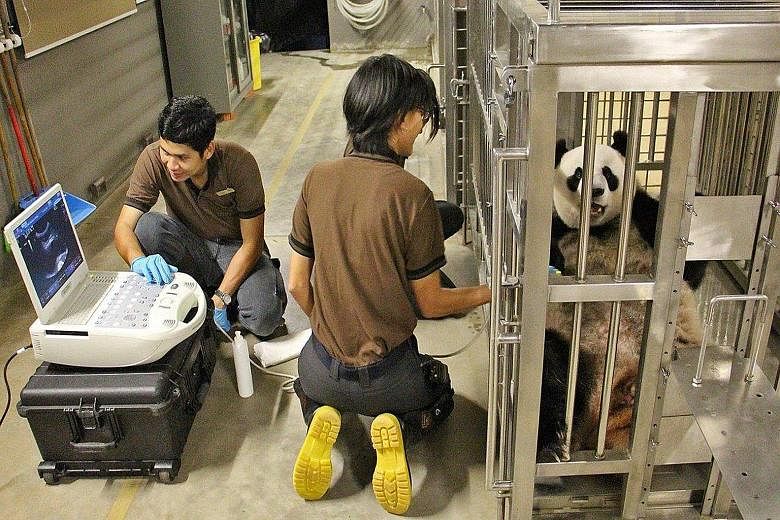There will be no SG50 panda cub: The River Safari's female panda Jia Jia is not pregnant, despite having shown signs of being so.
Based on scientific data gathered from its behaviour and hormone levels, the birthing window has now passed and panda caretakers have concluded that the seven-year-old bear is not pregnant, Wildlife Reserves Singapore (WRS) said in a statement yesterday. Multiple ultrasound scan results have also come up empty.
Jia Jia underwent artificial insemination on April 18 after an unsuccessful mating attempt with its male counterpart, Kai Kai. Since July, it was seen eating less bamboo and sleeping more; its hormone levels were also increasing - all signs consistent with pregnancy, or pseudopregnancy in Jia Jia's case.
Pseudopregnancy, when pregnancy symptoms appear in an animal not actually pregnant, is common for pandas under human care.
Dr Cheng Wen-Haur, WRS's chief life sciences officer, said: "Our team of vets and keepers were cautiously optimistic of being able to welcome a baby panda and, while we cannot expect one this year, we are pleased and encouraged by the development of Kai Kai and Jia Jia."
"The past months have provided an invaluable learning experience for us in understanding the complex reproduction and biology of one of the world's most charismatic species, and we hope for better results next year," he said.
Panda caretakers will review data collected in the past few months before the next breeding season begins around April next year.
To get the pandas accustomed to physical contact with each other, keepers aim to bring the pandas together before the start of the mating season. The panda pair, on a 10-year loan from China, moved to Singapore in 2012. They live in separate enclosures. Caretakers will also continue to vary daylight hours and temperature in the panda exhibit - a technique which successfully triggered the first breeding cycle of the pandas in April this year.
Female pandas have only one reproductive cycle a year, in which they are fertile for only 24 to 36 hours. There are only 1,600 giant pandas left in the wild in China and 300 in captivity around the world.

